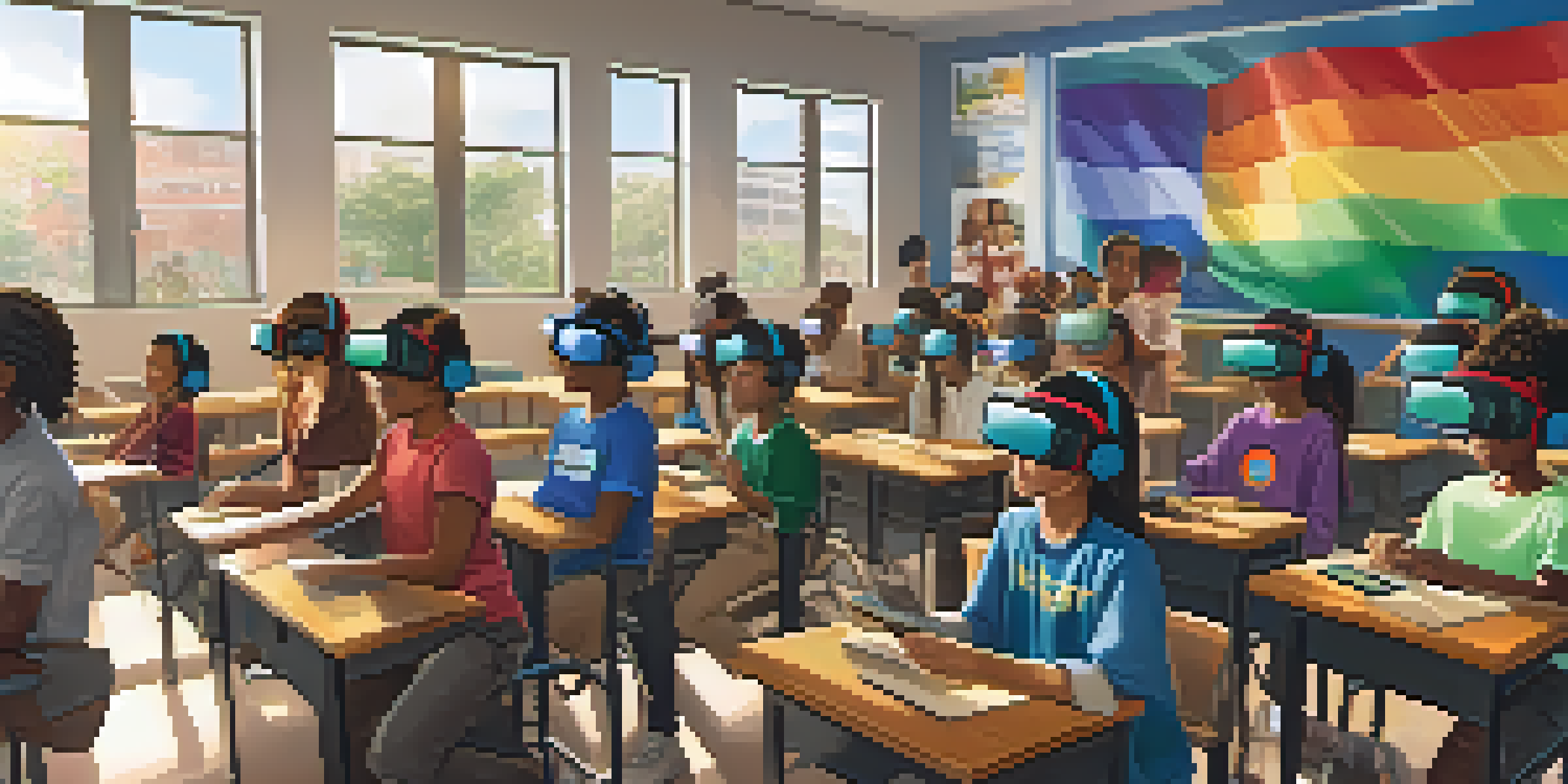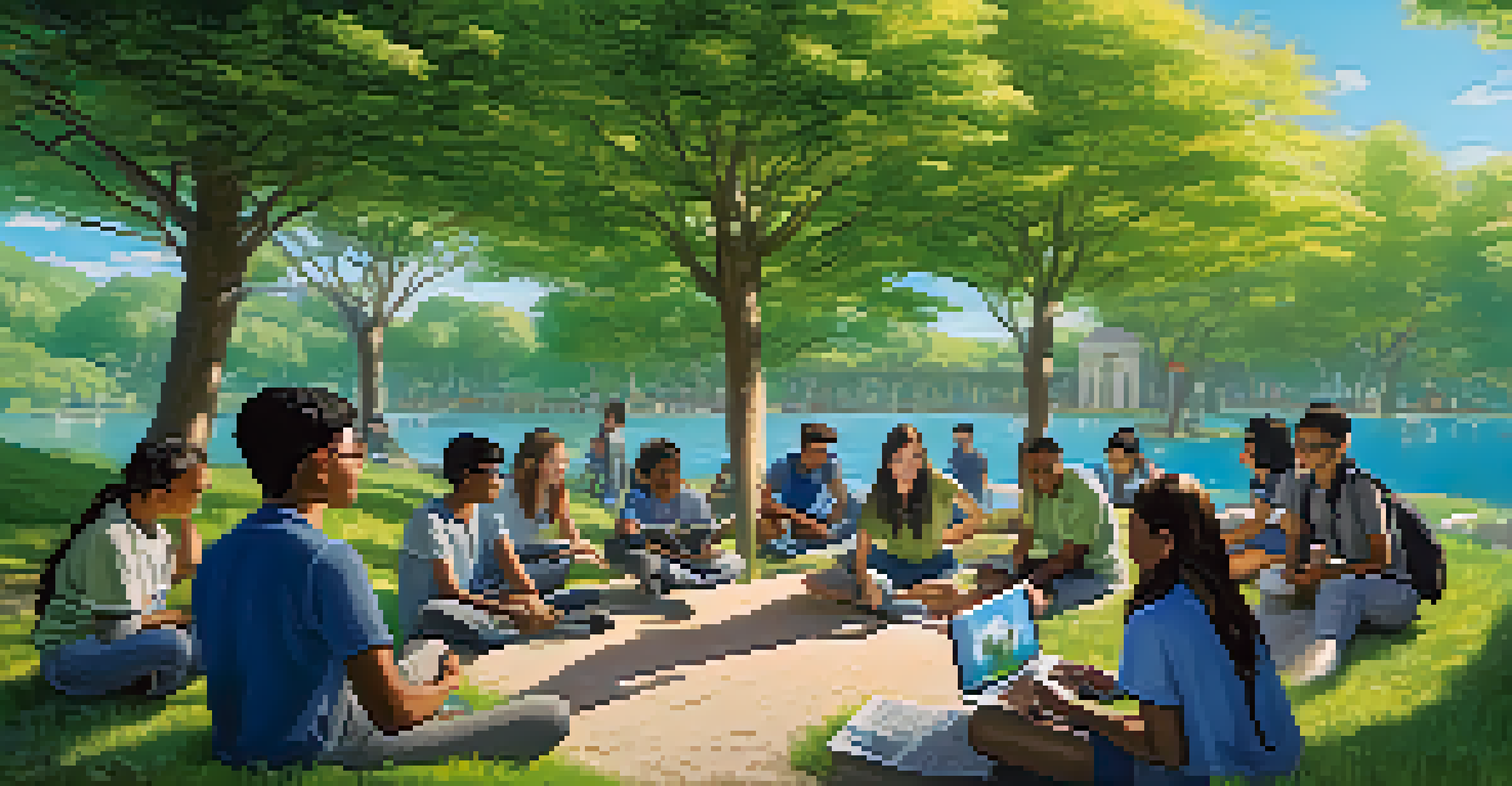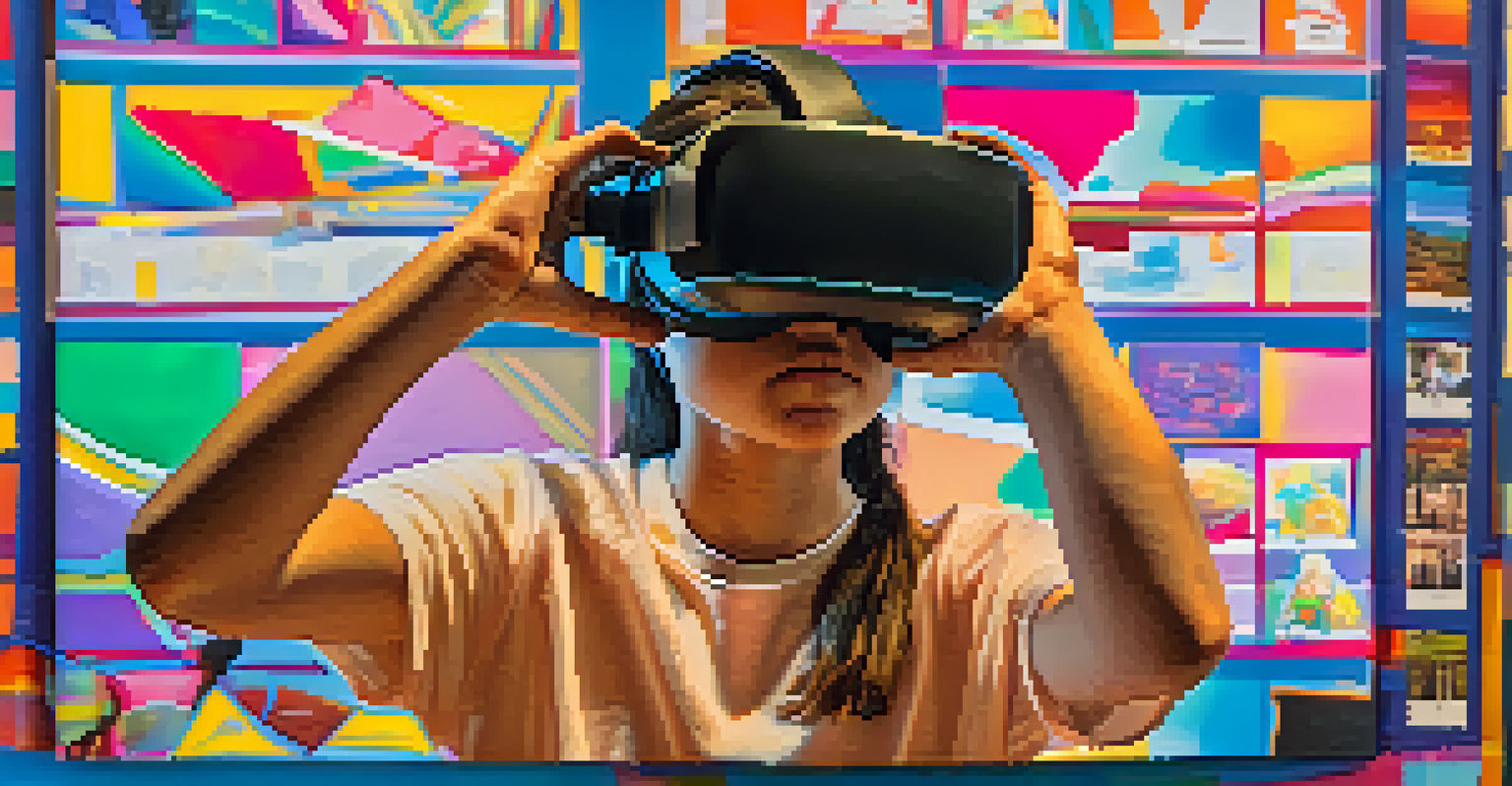The Benefits of VR in Teaching Global Citizenship Education

Understanding Global Citizenship Education in Today’s Context
Global Citizenship Education (GCE) aims to equip learners with the knowledge, skills, and values necessary to engage with the world responsibly. In an increasingly interconnected society, understanding global issues such as climate change, migration, and inequality is more vital than ever. GCE encourages students to think critically about their role in the global community and to act in ways that promote positive change.
The highest result of education is tolerance.
Traditionally, GCE has relied on textbooks and lectures, which can sometimes feel distant from real-world implications. However, the integration of innovative technologies, like Virtual Reality (VR), can transform the learning experience. By immersing students in diverse cultures and scenarios, VR makes global citizenship more tangible and relatable.
Imagine a classroom where students can virtually explore the streets of Tokyo, participate in a debate in Paris, or witness the effects of climate change in the Arctic. This hands-on experience not only enhances understanding but also fosters empathy, encouraging students to connect with global issues on a personal level.
Enhancing Empathy Through Immersive Experiences
One of the most powerful benefits of VR in education is its ability to cultivate empathy. When students step into the shoes of individuals from different backgrounds or cultures, they gain insight into their experiences and challenges. This immersive approach allows learners to see the world through a new lens, fostering a deeper appreciation for diversity.

For example, a student might experience life in a refugee camp through a VR simulation, which can evoke strong emotional responses that reading about such issues in a textbook simply cannot replicate. This emotional engagement is crucial in helping students understand the complexities of global issues and the human stories behind them.
Empathy Through Virtual Reality
VR immerses students in diverse experiences, enhancing their understanding and empathy towards global issues.
By developing empathy, students are better equipped to engage in dialogues about global citizenship and to advocate for positive change. This shift from passive learning to active participation can inspire a generation of compassionate and informed global citizens.
Encouraging Critical Thinking and Problem-Solving
VR not only fosters empathy but also encourages critical thinking and problem-solving skills. In a VR environment, students can engage in simulations that require them to make decisions based on real-world scenarios. For instance, they might have to navigate a crisis such as a natural disaster, considering the needs of various communities involved.
Education is the most powerful weapon which you can use to change the world.
Through these experiences, students learn to evaluate different perspectives, weigh potential outcomes, and develop actionable solutions. This hands-on approach to problem-solving is invaluable, as it mirrors the complexities they will face in real life.
Moreover, the interactive nature of VR means that students can experiment and learn from their mistakes in a safe environment. This trial-and-error learning process not only enhances their understanding but also builds resilience and adaptability—key traits for any global citizen.
Promoting Collaboration and Communication Skills
Collaboration is at the heart of global citizenship, and VR can facilitate this by bringing students together from different parts of the world. Virtual platforms can create opportunities for cross-cultural collaborations, where students work together on projects that address global challenges. This teamwork fosters communication skills and cultural exchange, which are essential for effective global citizenship.
Imagine students from different countries teaming up in a VR space to tackle climate change, each contributing their unique perspectives and ideas. This not only enhances their understanding of global issues but also builds friendships that transcend borders.
Fostering Critical Thinking Skills
Engaging in VR simulations helps students develop critical thinking and problem-solving abilities by navigating real-world scenarios.
By learning to communicate and collaborate effectively in a virtual setting, students are better prepared for the global workforce, where teamwork and cross-cultural understanding are increasingly essential.
Expanding Access to Diverse Learning Opportunities
One of the most significant advantages of VR in education is its ability to democratize learning. Students from diverse backgrounds and locations can access the same high-quality educational experiences, breaking down geographical and socio-economic barriers. This is particularly important in global citizenship education, where diverse perspectives enrich understanding.
For instance, students in rural areas can visit world-class museums or historical sites virtually, experiencing cultures and histories that they may never have the opportunity to explore in person. This level of access helps to level the playing field, ensuring that all students have the chance to engage with global issues.
As more schools adopt VR technology, the potential for inclusive and equitable education grows, enabling all students to become informed global citizens, regardless of their starting point.
Integrating VR into Existing Curriculums Seamlessly
While the benefits of VR in global citizenship education are clear, integrating this technology into existing curriculums can seem daunting. However, with thoughtful planning and collaboration among educators, it can be achieved seamlessly. Teachers can start small by incorporating VR modules that align with their current lessons, gradually expanding as they become more comfortable with the technology.
For example, a history lesson on the Cold War could be enhanced with a VR simulation that places students in key events, allowing them to experience the tension and stakes firsthand. This not only enriches the lesson but also makes it more engaging for students.
Access to Global Learning Opportunities
VR democratizes education by providing students from various backgrounds access to high-quality learning experiences, regardless of location.
Moreover, professional development opportunities can help educators learn how to effectively use VR tools, ensuring they feel confident and prepared to bring this exciting technology into their classrooms.
Addressing Challenges and Limitations of VR in Education
Despite the many advantages, there are challenges to implementing VR in education that must be addressed. Cost is a significant factor, as high-quality VR equipment can be expensive, and schools may struggle to secure funding. Additionally, not all educators may feel comfortable using new technologies, which can create barriers to adoption.
Moreover, while VR offers immersive experiences, it is essential to ensure that these experiences are designed thoughtfully to avoid stereotypes or misrepresentations of cultures. Educators must be cautious about the content and context of VR simulations to ensure they foster genuine understanding.

By acknowledging these challenges and seeking solutions, such as grants or community partnerships, educators can pave the way for a successful integration of VR in global citizenship education.